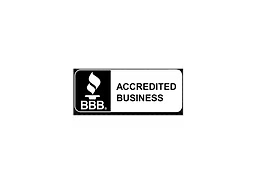Toilet Installation & Repairs
Jolly Plumbing & Heating, Inc. Handles Repairs and Installations When it comes to plumbing in the Colorado Springs area, we have seen it all. Our plumbers can be at your home in no time
Toilet Repairs
Toilets are a mundane part of your household; they don’t need much attention paid to them. That is, until the toilet starts leaking, running, thumping, or facing any other issue that calls for repair. Unfortunately, toilet issues aren’t always a simple repair, usually require the help of a local plumber.
There are numerous different things that could go wrong with your toilet, and Jolly Plumbing is the company to call for any of those fixes you might need.
Common Toilet Problems

Toilet Bowl Leaking
If you are cleaning around the bottom of your toilet, and you notice water around the bottom of the toilet, this could be a sign that it’s leaking. The water that is leaking from the bottom of the toilet is most likely dirty water as well, meaning it was in the bowl when the toilet was used. It is very important to act fast on this type of issue because it has the potential to do major damage.

Toilet Bowl Draining Slowly
When you flush the toilet, pay attention to how it drains and refills. If your toilet is draining excessively slow and sounds like it’s having a tough time draining, this is a red flag. There could be something wrong within the toilet, or there could be a clog. Having a simple toilet clog is nothing to stress about, but if it’s happening often, your plumbing might have a more significant issue that needs to be looked at by an expert.

Toilet Bowl Overflowing
Instead of your toilet draining too slowly, your toilet overflows. The overflow could happen when you flush, or when it refills after being flushed. When your toilet overflows when you flush, this could mean that there is a clog, which is something that needs to get fixed right away before your home sustains serious water damage. Having a toilet overflow is possibly one of the worst parts about toilet repair because it makes the biggest mess.

Running Water Constantly
veryone knows that annoying sound of hearing your toilet run from the other room. Sometimes it’s an easy jiggle of the toilet handle to stop it from running, but sometimes there is a more pressing issue. Some common causes of your toilet running are a long flapper chain, a deteriorating flapper, and/or your float level could be too high. These causes typically have a simple fix, cut the chain shorter, get a new flapper, or adjust the float level.
Common Toilet Repair FAQS
Toilet Installations
Is it time for your toilet to be replaced?
If so, there is another decision to make: hire a professional or do-it-yourself. If you want to ensure that your broken toilet is replaced and a new one is installed correctly, then you should hire a professional. Replacing an old toilet may sound like a simple venture, but it’s much more complex than most people think. It is important to hire a professional to install a new toilet because there are a few key components you could miss or not get connected correctly, if you did it on your own.

Commercial Toilet Installation
For commercial buildings, toilet installation is largely the same process but has multiple toilets and stalls to service. For new construction, commercial toilet installation requires toilet partitions to be installed as well. Choose from metal, plastic, or stainless steel toilet partitions to complete the bathroom in your commercial building, whether it is an office building, a restaurant, a doctor’s office, and the like.



